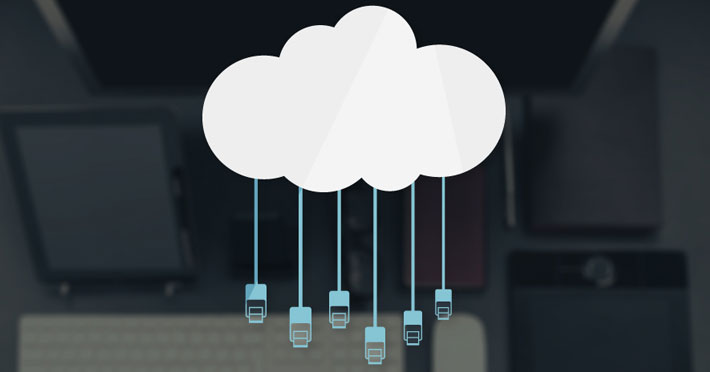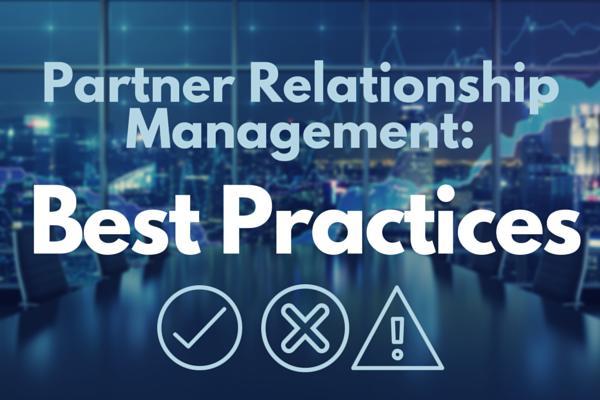If a company is looking into Partner Relationship Management (PRM) Software to help them manage and improve relationships with channel partners, there's one very basic question they need to answer early on. The answer to this question will dictate a lot of elements in terms of how the system will be implemented, and how it will be administrated after deployment.
In short: Should the PRM be hosted on the cloud as a SaaS solution or be installed and owned locally? Keep reading to find out.
There's no single "right" answer here, and which is right for your business will largely depend on your needs, your budget, and your future expansion plans. Let's take a look at the issue, and provide some guidelines as to which is the better option in which cases.
Local vs SaaS For Installing PRM Software
Benefits Of Cloud-Based SaaS
Lower cost of entry and potentially lower TCO
The first and biggest argument for SaaS solutions is that they are much less expensive to implement initially. A local solution means having both the hardware and the technical expertise on-site to manage the system. This creates a pretty significant barrier to entry, especially for organizations that may simply not have the budget to afford it.
Whether this translates into lower TCO/higher ROI is a trickier question, and largely depends on the expenses and contact negotiated with the SaaS provider. None the less, in many cases SaaS is the cheaper overall route.
Expert administration and management
SaaS solutions pretty much always come with 24/7 administration and oversight as part of the package, and they'll be staffed by experts who fully understand the hardware and software involved. Most of the time, this includes automatic alerts whenever anything happens that affects your business.
Simple scalability
Another cost-related factor with PRM is that it needs to be able to grow as your organization and partner ecosystem grows. If you're hosting on-site, this means buying additional hardware and infrastructure. With SaaS, adding capacity or users is easily handled as needed, and new functionality that maintains a best-in-breed solution is part of the ongoing services. Over time, locally grown point solutions become very difficult to manage and execute in a complex indirect sales channel, making PRM a prime example of a scalable SaaS solution.
Improved accessibility
One of the big challenges in regards to PRM systems is ensuring every partner has access, potentially from a wide range of locations and computer systems. A SaaS solution will be better able to ensure this universal accessibility is there. A best practice is to inquire about the hosting infrastructure and request an SLA that specifies network up-time, scheduled maintenance windows, etc.
Benefits Of Local Ownership And Installation
Total control
If you own the hardware and you own the software, then there is no middleman telling you what can or can't be done with it. With SaaS, if there's a feature you want implemented, it may not be possible if the SaaS provider doesn't want to do it. With your own local install, you hire programmers and make it happen.
Data handling
Depending on your line of business, your levels of security, and relevant government regulations, you may not want most/all your data in the hands of a third party you can't control. If your systems are cloud-hosted and get hacked, you will be the one blamed, even if the cloud host was technically at fault. Local ownership means security can be every bit as tight as you need it to be.
Up-times and technical support
While any reputable SaaS provider will have guaranteed service levels in their contract, generally 99.99% up-time, a paper contract has very little to do with real-world externalities. If something does happen to take the system down, you'll be stuck waiting on the SaaS provider to fix it, rather than being able to do anything about it internally.
This is one reason why, when hiring SaaS services, it's vital to inquire into their own backup and contingency plans.
The Bottom Line
More and more businesses today are moving their software solutions to the Cloud. As larger enterprises such as Amazon Web Services (AWS), Microsoft, and Google continue to provide more scalable solutions - and more competitive pricing - the rationale behind considering a Cloud-based PRM technology becomes more compelling.
If you need more help or advice understanding the LogicBay PRM solution and where we fit in this equation, don't hesitate to contact us. As one of the leaders in PRM software, we can help ensure you pick the best option for your business and your future needs.

